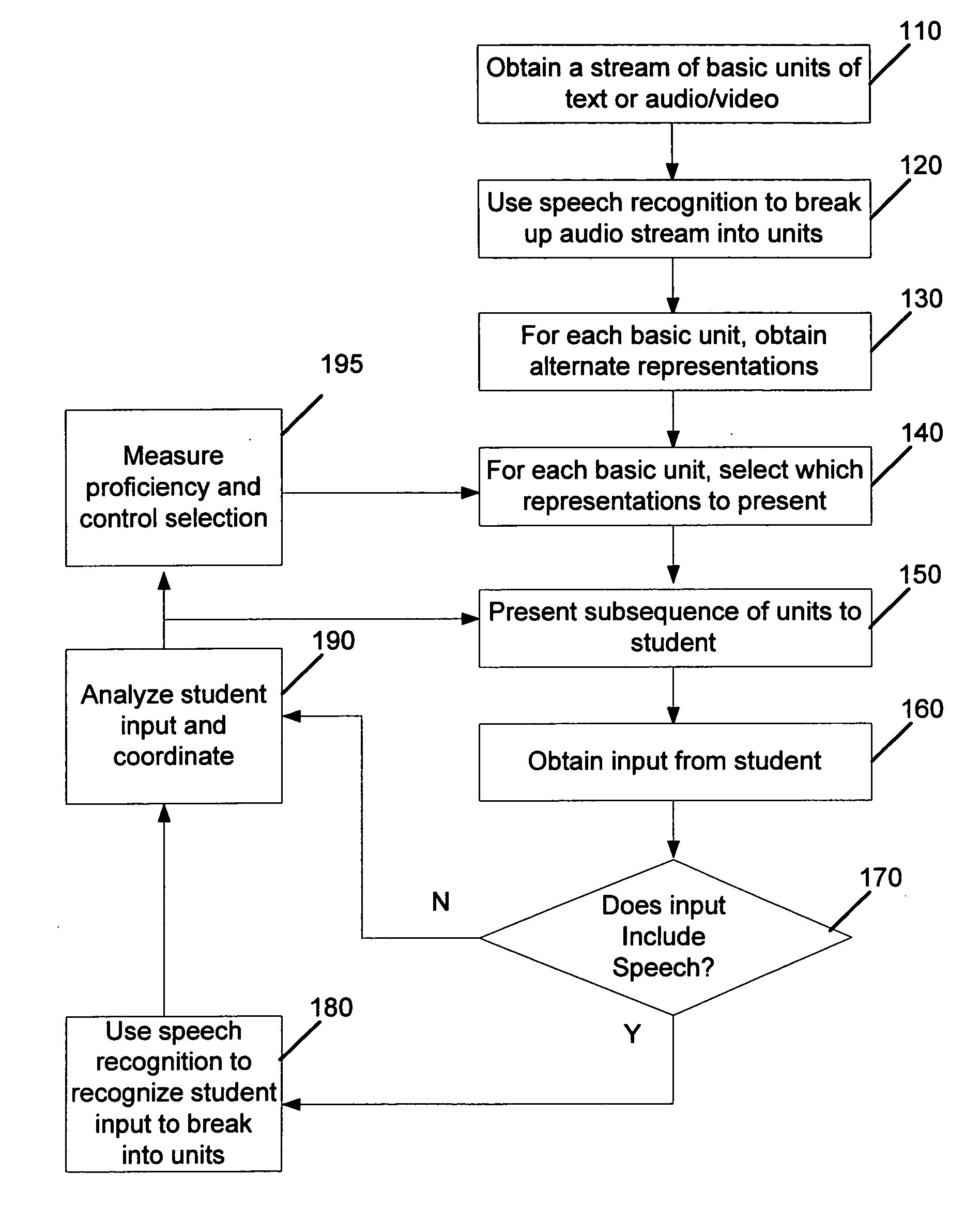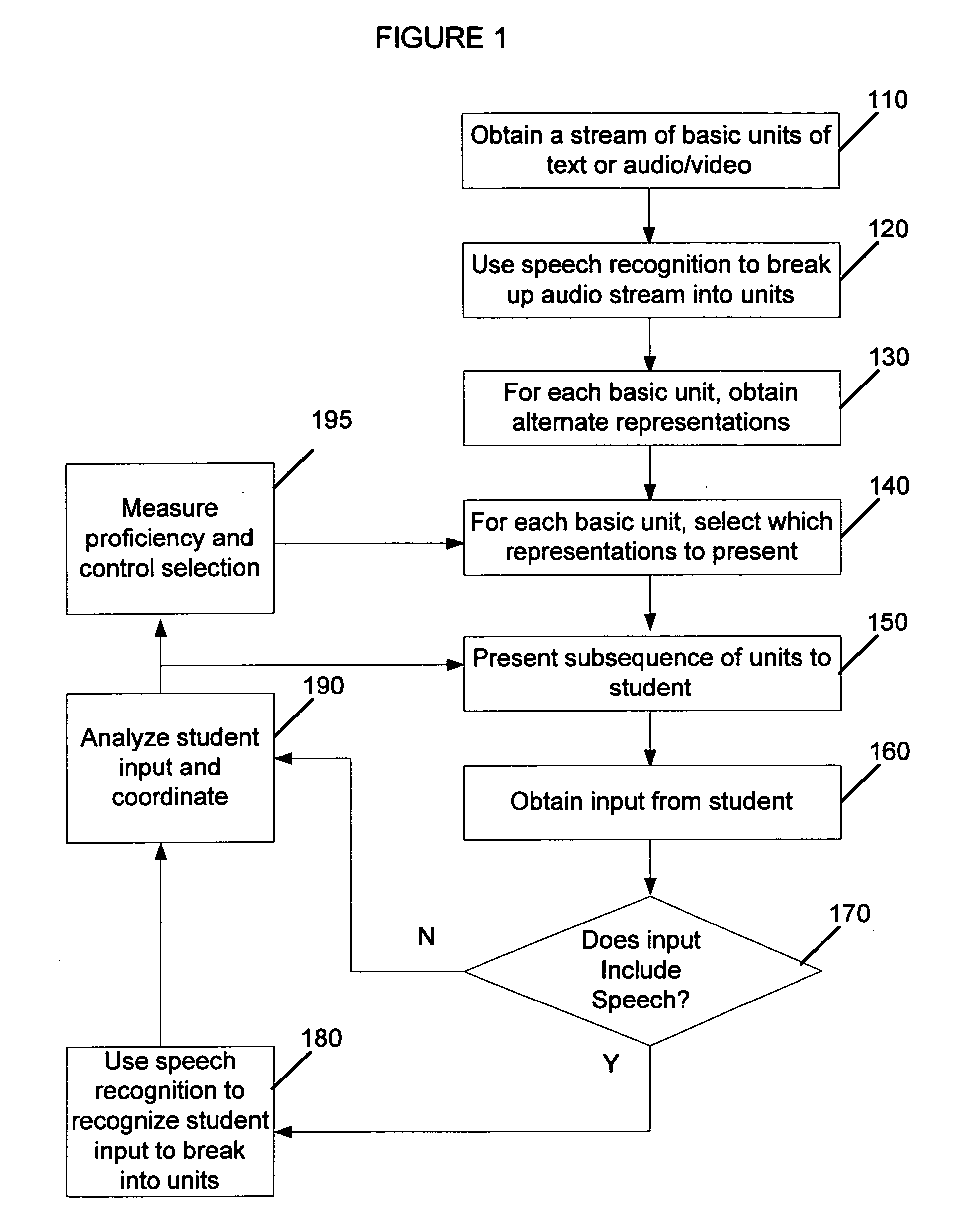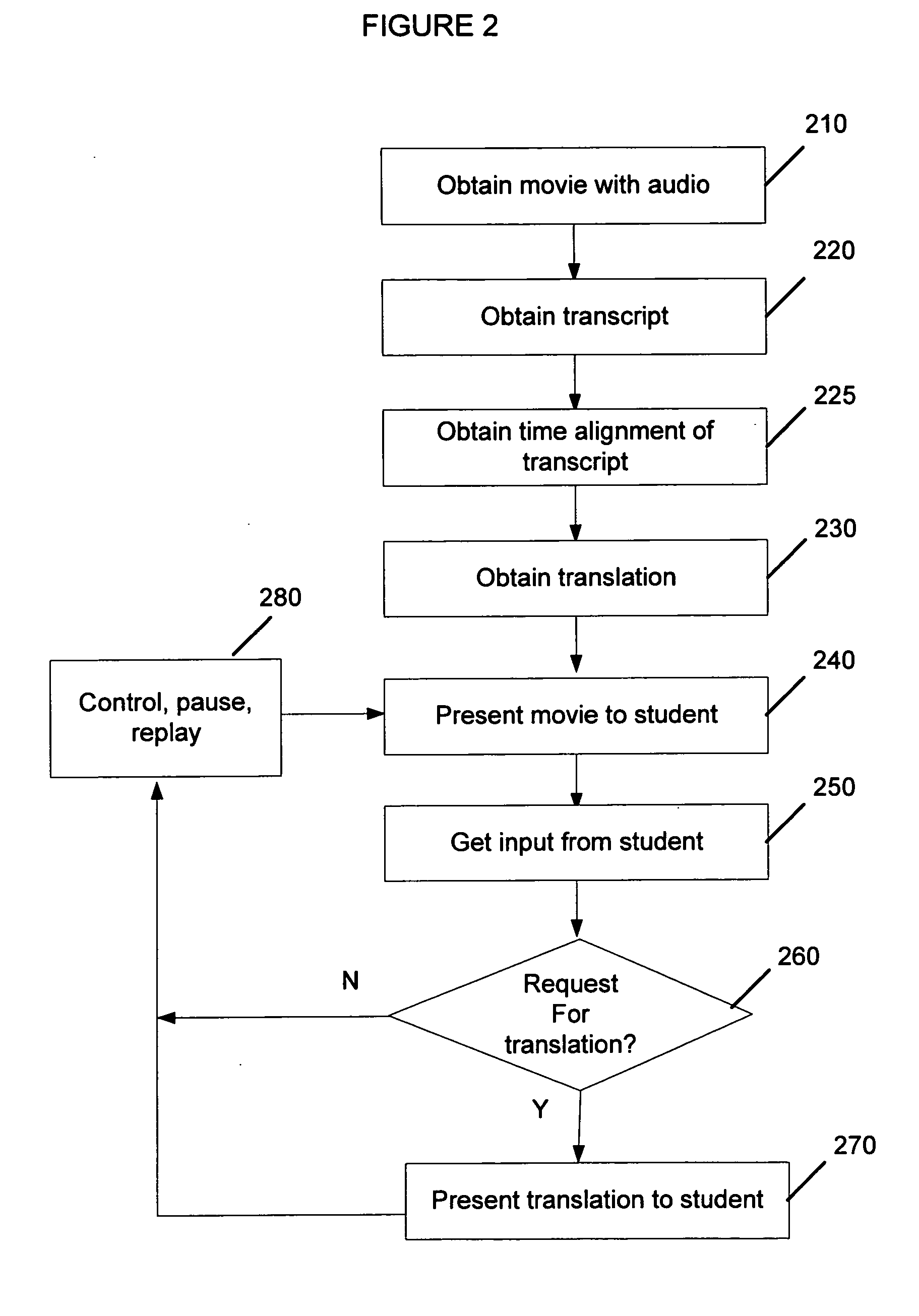Interactive language learning system and method
a learning system and language technology, applied in the field of interactive language learning system and method, can solve the problems of limited human instruction, high cost of dedicated human instruction, and high cost of true immersion
- Summary
- Abstract
- Description
- Claims
- Application Information
AI Technical Summary
Problems solved by technology
Method used
Image
Examples
first embodiment
[0047] Block 120 breaks up any continuous audio stream of spoken language into basic units using a large vocabulary continuous speech recognizer, such as Carnegie Mellon University's Sphinx recognizer. Typically, the basic units will be words or phrases, but in alterative implementations of this embodiment the units might be sub-word units such as individual sounds or phonemes, or might be longer units such as phrases or sentences. If the transcription of the audio stream is not known, a transcription may be obtained either by using the continuous speech recognizer or from human transcribers. In an implementation of the first embodiment, the continuous speech recognizer is used to obtain a rough transcript and a clean transcript is obtained by having one or more teams of students or individual students correct the errors in the rough transcription as a student exercise. Once a transcription is available, a time alignment is computed between the audio stream and a network representin...
second embodiment
[0129] Referring now to FIG. 5, the process of preparing a transcription is illustrated, in accordance with the invention. In block 510, speech data is obtained. This speech data will be saved and logged, if that has not already been done. The process then follows either or both of two alternative paths.
[0130] In block 520, the students make a transcription manually, by listening to the speech and writing what they hear. For the students this is an instructional exercise, so the transcription might be done first by students who are learning the source language and who may make a significant number of errors. In an implementation of this embodiment, other students, perhaps native speakers of the source language will help the original students correct their errors. The initial more errorful transcriptions, the communications between the students and the final transcriptions are all recorded and logged by the system as linguistic data.
[0131] In block 530, an automatic speech recogniti...
third embodiment
[0144] Referring now to FIGS. 8 and 9, these figures show the process by which multi-lingual teams whose members are at physically separated locations communicate with each other with the aid of the system and the process by which the linguistic data is recorded, saved and logged, in accordance with the invention.
[0145]FIG. 8 illustrates the process of a student speaking or entering text and of the text being translated to other languages to be communicated to other students.
[0146] In block 810, the student logs in to the system and sets his or her language preferences and whether to use spoken or typed input.
[0147] In block 820, the student speaks a message to be sent to another student or to the processing system. The spoken input is recorded, saved and logged as linguistic data.
[0148] In block 830, the speech is recognized by an automatic speech recognition system.
[0149] In block 840, the student corrects the errors made by the speech recognition system, if any. These error c...
PUM
 Login to View More
Login to View More Abstract
Description
Claims
Application Information
 Login to View More
Login to View More - R&D
- Intellectual Property
- Life Sciences
- Materials
- Tech Scout
- Unparalleled Data Quality
- Higher Quality Content
- 60% Fewer Hallucinations
Browse by: Latest US Patents, China's latest patents, Technical Efficacy Thesaurus, Application Domain, Technology Topic, Popular Technical Reports.
© 2025 PatSnap. All rights reserved.Legal|Privacy policy|Modern Slavery Act Transparency Statement|Sitemap|About US| Contact US: help@patsnap.com



